
Tegola Elite Plank Grey Oak Luxury Vinyl from Carpetright
Choosing flooring is difficult enough at the best of times but when you have to factor in underfloor heating there are a few more considerations you need to bear in mind. Underfloor heating is becoming increasingly popular and is one of the fastest-growing sectors of the UK heating industry. This is partly because underfloor heating systems are becoming easier to install and partly due to the requirement for improved energy efficiency as the UK government pushes for carbon net zero emissions by 2050 and works towards the implementation of the Future Homes Standard by 2025.
There is also a high demand for added comfort in our homes and underfloor heating represents an innovative way to heat your home evenly, without the restrictions and limitations that traditional radiators present.
However, one question that often arises for homeowners and developers alike is, “What’s the best floor to go over underfloor heating?” In this post, I will try to answer this crucial question, ensuring you can make an informed decision that’s right for your space.
Understanding Underfloor Heating
Before we dive into the details of the best floor coverings, it’s worth understanding the basics of underfloor heating. There are two main types: wet (or hydronic) systems that use heated water piped from your boiler, and dry (or electric) systems that utilise electrical heating cables or mats. Both provide radiant heat that warms the floor surface, which in turn heats the room.
Different flooring types interact differently with these heating systems. It’s not just about how well they conduct heat; we also need to consider their thermal expansion, stability, comfort, and, of course, aesthetics. The flooring is, after all, one of the most noticeable aspects of your interiors, and it needs to be a perfect blend of form and function.
With that foundation set, let’s delve into some of the best floor coverings for underfloor heating. These recommendations are based on their thermal conductivity, compatibility, and practicality.
Stone and Ceramic Tiles
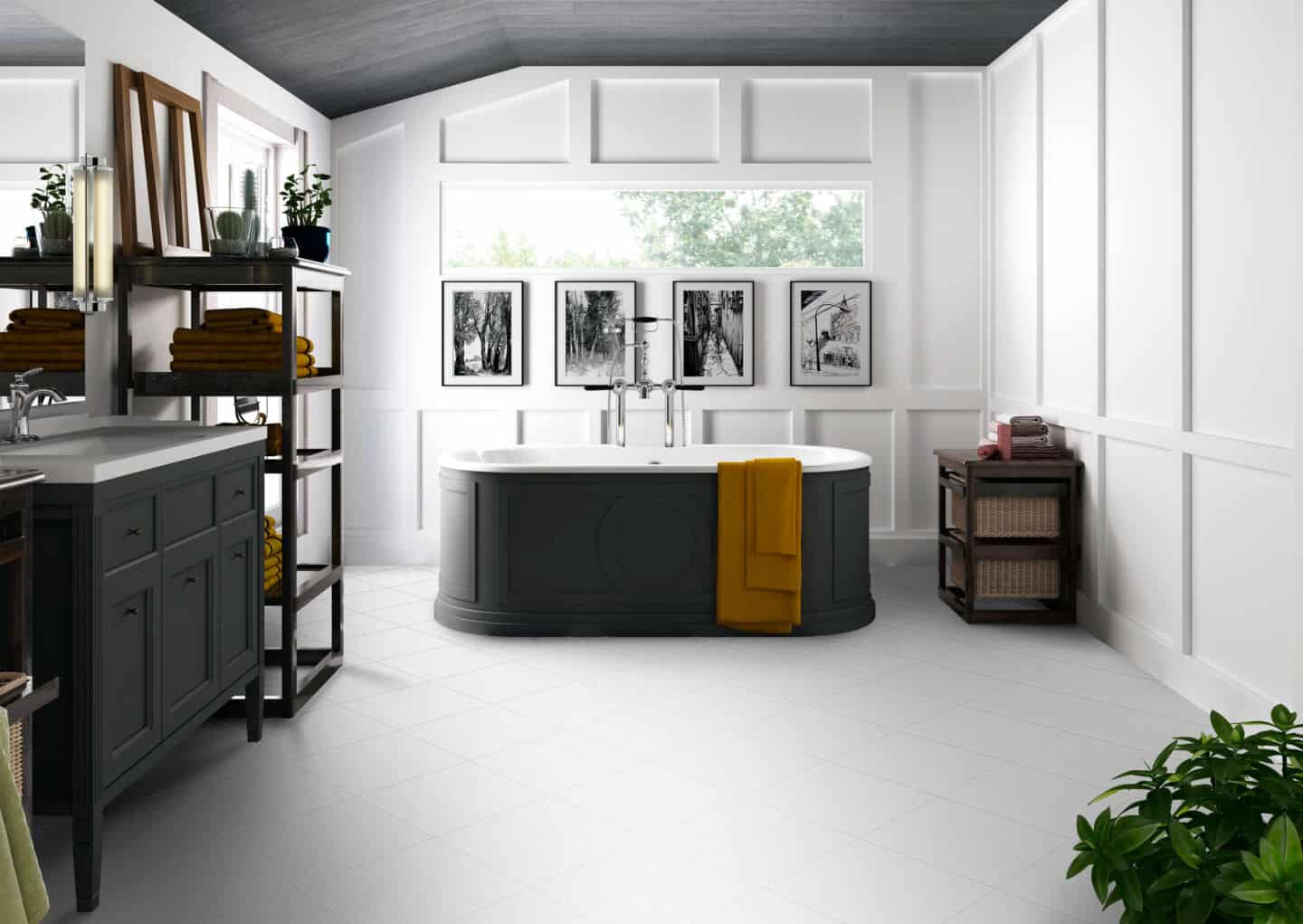
Chess White Matt Ceramic Floor Tile from Tile Mountain
One of the most effective options for underfloor heating is stone and ceramic tiles. Not only do they offer a sleek, modern look, but they also have high thermal conductivity. This means that they’re great at absorbing heat and evenly distributing it across the floor. These materials can handle the heat well, and once warmed up, they stay warm, keeping your living spaces cozy long after the system has been switched off.
That said, tiles can feel hard underfoot and may not be the warmest choice for areas where comfort is key, such as bedrooms or children’s play areas. As such, you might want to consider other flooring options for these spaces.
Engineered Wood Flooring
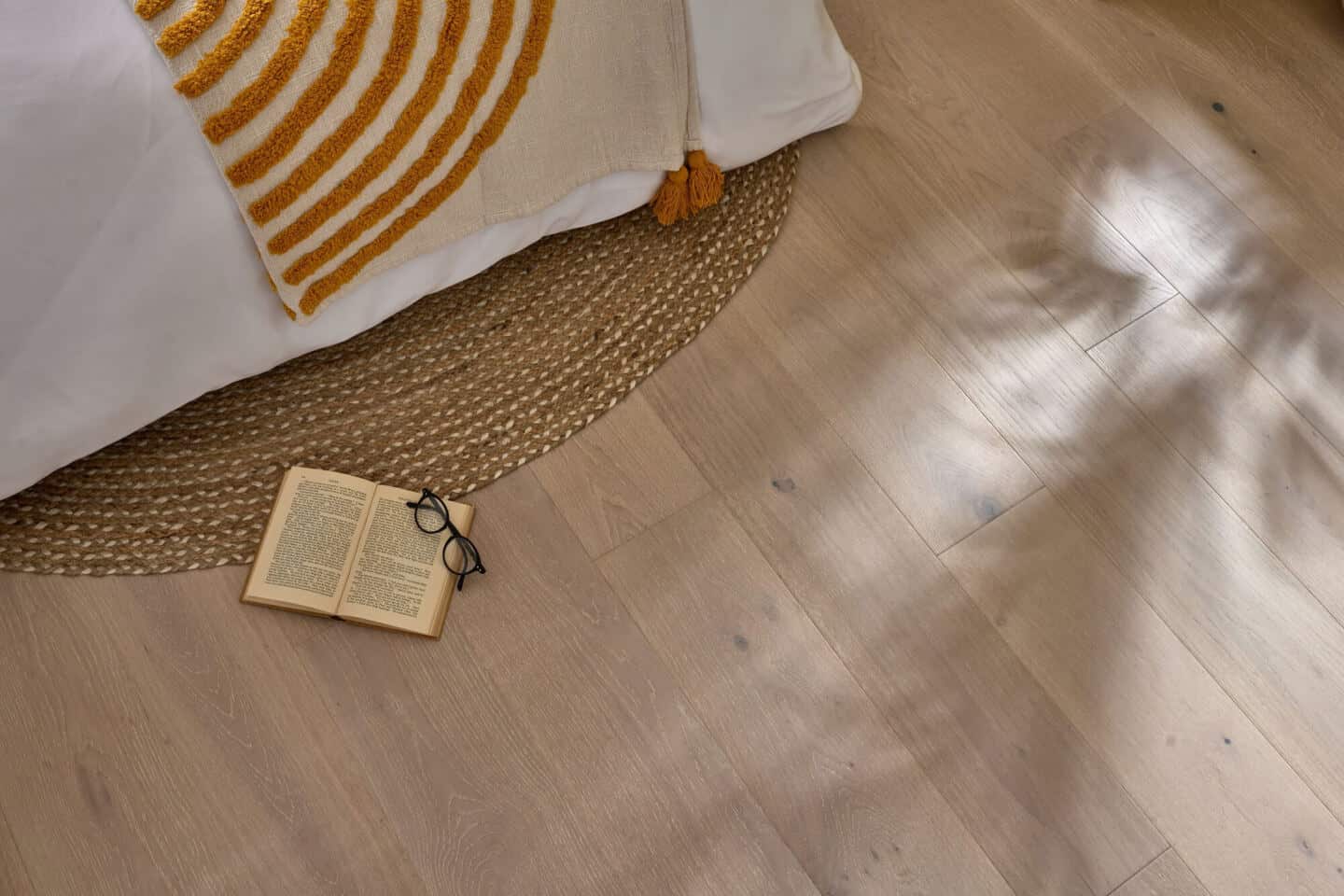
Salcombe Pearl Oak Engineered Wood Flooring from Woodpecker Flooring
Engineered wood flooring is another solid choice for underfloor heating. Its layered construction offers a good balance of heat conduction and thermal stability. This means that it can handle the changes in temperature without warping or cracking – a concern that often comes with solid wood floors. Engineered wood also offers the beauty and warmth of real wood, making it a popular choice for many homeowners.
However, bear in mind that not all engineered wood is the same. The thickness and type of wood used can significantly affect its performance with underfloor heating. Thinner boards with a high-density wood, like oak, tend to perform better.
Laminate and Vinyl Flooring
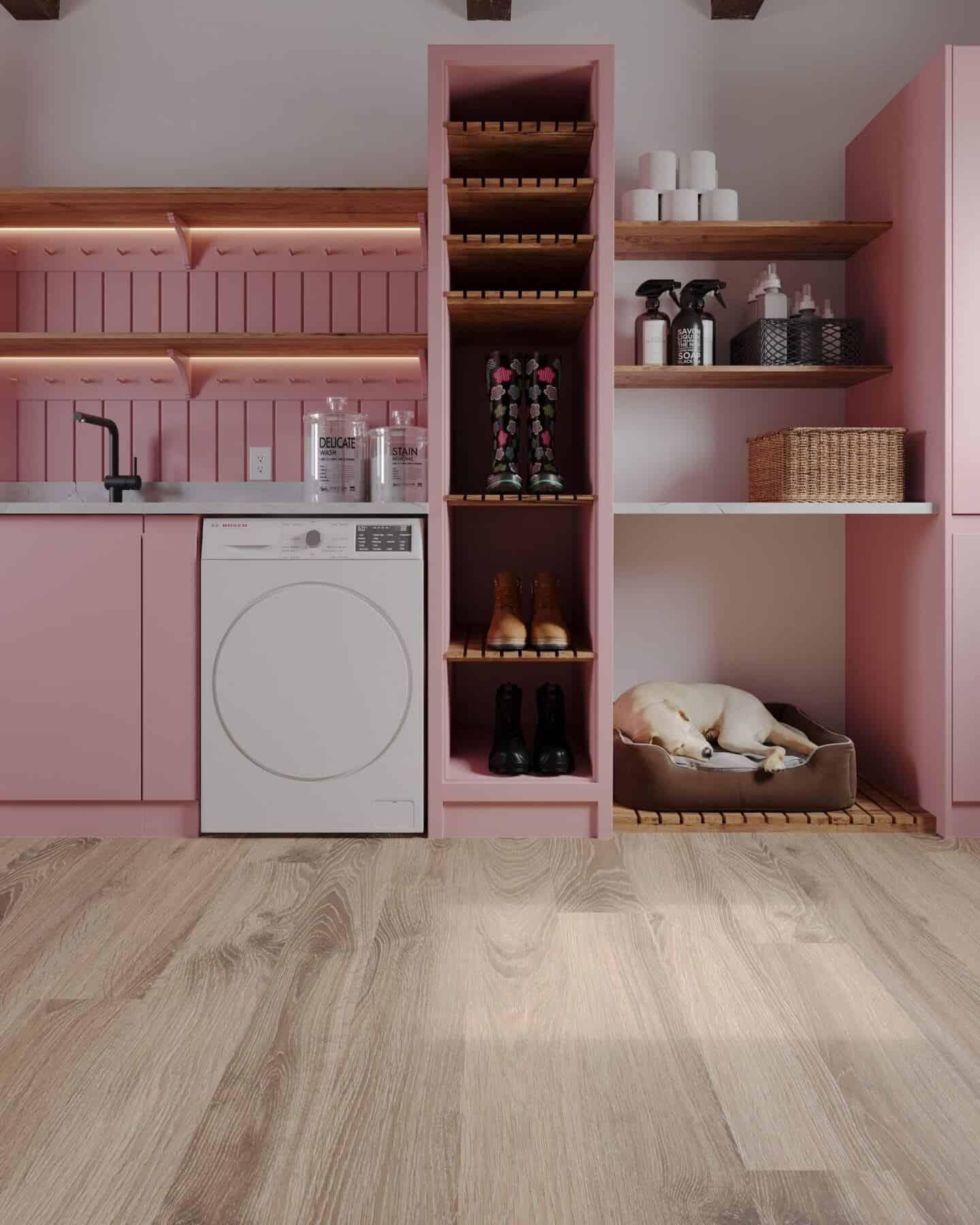
Valamara Oak Wide Laminate Plank from The Wood Flooring Co.
Laminate and vinyl flooring have grown in popularity over recent years due to their practicality, affordability, and range of styles. Both are suitable for use with underfloor heating systems. They provide good heat conduction and are more comfortable underfoot than tile or stone.
Despite their many benefits, these synthetic floors do have limitations. They’re susceptible to damage from sharp objects and can fade with exposure to sunlight over time. Furthermore, while they may imitate the look of real wood or stone, they don’t quite match the feel or longevity of these natural materials. It’s important to weigh these factors up when considering laminate or vinyl for your underfloor heating system.
Carpet: A Comfortable Choice
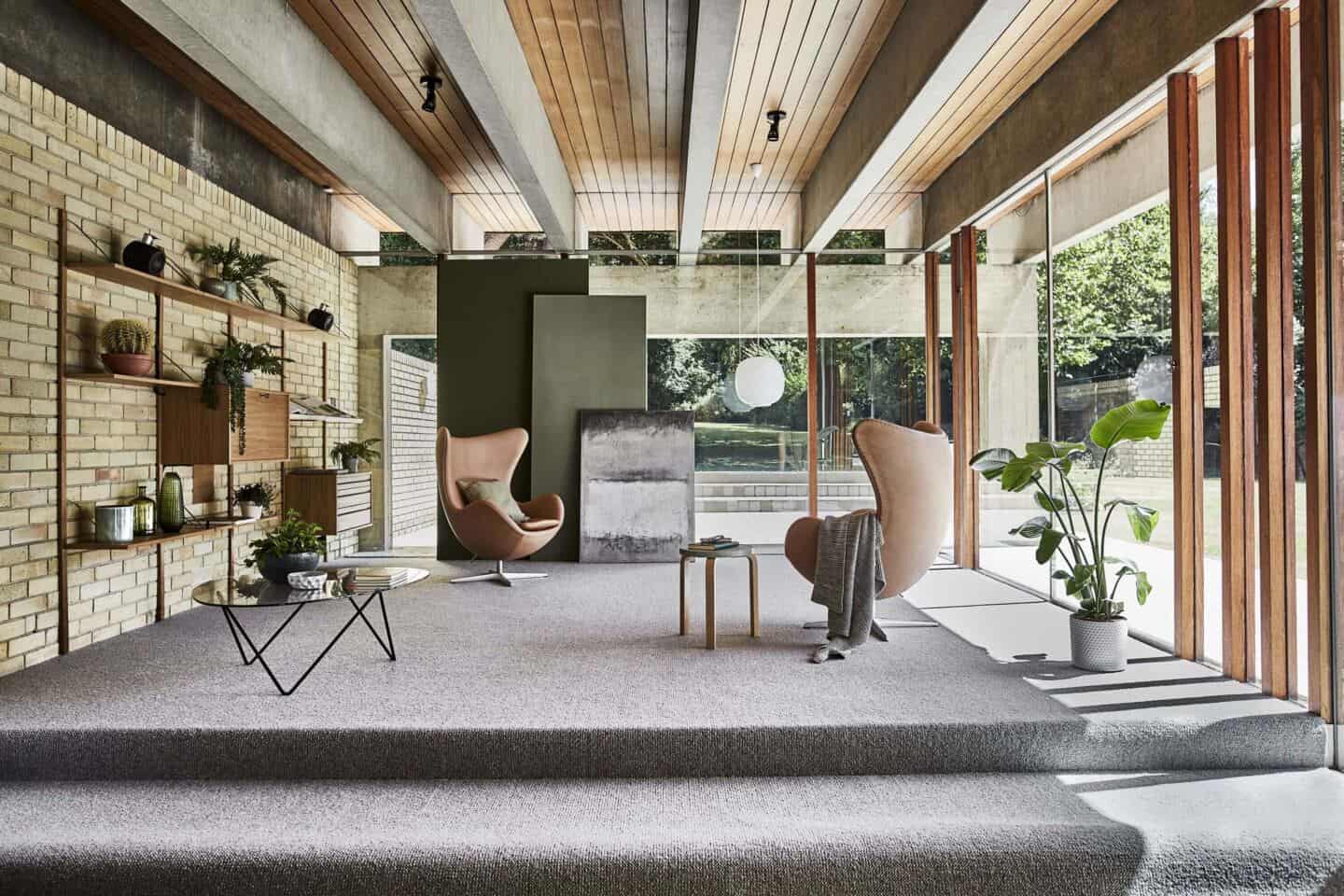
Auckland Berber Wool Carpet In Silver from Carpetright
Let’s not forget the humble carpet, a traditional favourite for its cosy, plush feel underfoot. Carpet can indeed be used with underfloor heating systems, but it is essential to consider its insulating properties. The thicker the carpet, the more it will insulate against the heat, reducing the efficiency of the heating system. Therefore, if you’re opting for carpet, it’s advisable to choose a thin type with low tog ratings. Also, the underlay beneath the carpet should be designed for use with underfloor heating.
Despite its insulating properties, carpet does provide unmatched comfort and warmth. It’s ideal for bedrooms and living areas where you want a warm, cosy feel, especially in colder months.
The Need for Professional Flooring Fitters
Choosing the right floor for your underfloor heating system is one thing, but fitting it correctly is another. It’s a complex task that requires the right tools, knowledge, and patience. Therefore, it is advisable to engage a professional flooring fitter.
You can use platforms such as MyBuilder to find flooring fitters near you. They can ensure the floor is installed correctly, preventing any potential damage or inefficiencies, and saving you the headache of potential issues down the line.
The Balancing Act: Aesthetics vs Efficiency
Finding the right balance between aesthetics and heating efficiency is often the trickiest part of selecting a floor covering for your underfloor heating system. While stone and ceramic tiles offer high heat conductivity, they might not provide the warm, cosy feel you desire in certain rooms. Engineered wood and laminate offer a balance of warmth, aesthetics, and good heat conduction. But for ultimate comfort, carpet, with its heat insulation, could be the choice, particularly for bedrooms.
Always consider the room’s usage and your personal preference in style and comfort. It’s your space, after all, and you should love every step you take in it.
A Consideration for Sustainability
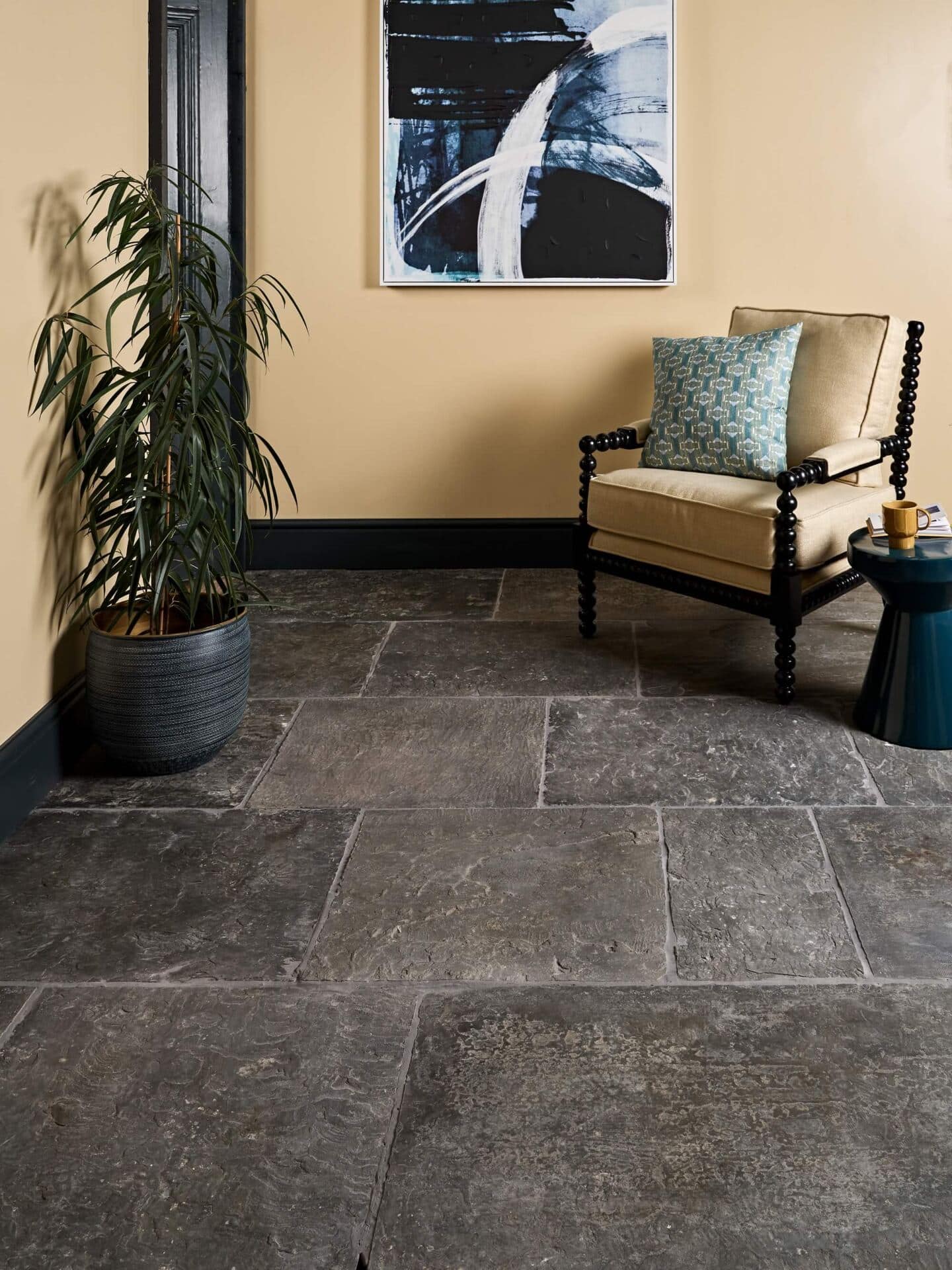
Highclere Limestone floor tiles from Ca’ Pietra
In today’s world, more and more homeowners are consciously making eco-friendly choices for their homes. If sustainability is a key factor for you, you’ll want to consider this in your floor selection. Some flooring options are more environmentally friendly than others. For instance, ceramic and stone tiles are long-lasting and could be a sustainable choice considering their durability. Engineered wood, on the other hand, uses less hardwood than solid wood floors, making it a more sustainable choice.
When considering sustainability, it’s not just about the material itself, but also about its source. Consider options that have been responsibly sourced or made from recycled materials. This way, you’re not just choosing a floor that’s good for your underfloor heating, but also good for the planet.
Resale Value: Making a Worthwhile Investment
Last but not least, consider the impact of your flooring choice on your property’s resale value. Quality flooring is an investment, and the right type can significantly enhance the appeal and value of your home.
Hardwood flooring, for instance, is highly sought after by homebuyers due to its timeless appeal and durability.
While engineered hardwood might be more compatible with underfloor heating, solid hardwood floors can add more value to your home. On the other hand, tile flooring, particularly high-quality ceramic or stone tiles, can also increase a property’s value, especially in rooms like the kitchen and bathroom.
It’s All About the Right Fit

Corinthian Laminate In Palacade from Carpetright
Choosing the perfect floor to go over underfloor heating involves a mix of practical considerations and personal tastes. Each flooring type has its advantages and potential drawbacks, and what’s right for one home might not work for another. Ultimately, the best floor for underfloor heating is one that strikes the right balance for you: heat efficiency, durability, comfort, and of course, style.
I hope this guide has shed some light on the topic, and helps you make a confident decision for your home. Remember, once you’ve made your choice, ensure that it’s installed correctly by a professional flooring fitter to get the most out of your underfloor heating system. After all, it’s not just about choosing the right floor, but also about ensuring it’s laid right!
